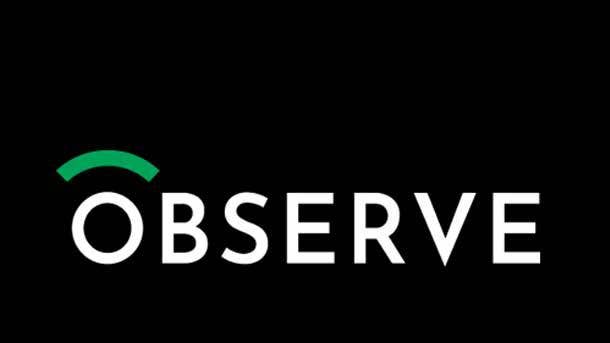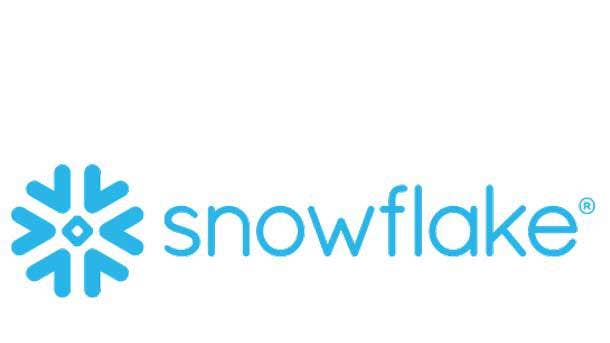Observe Exits Stealth; Targets Splunk, Datadog For Observability: CEO Jeremy Burton
‘These systems have gotten so complex. And so we thought, there’s got to be a way to solve that problem. There has to be a way of looking at all of the data that the applications and the infrastructure emits. There’s got to be a way to figure out what’s going on,’ says Observe CEO Jeremy Burton.

A Focus On SaaS Observability
When businesses move to the cloud, they find themselves dealing with increasingly complex ways of managing and troubleshooting applications. Observe, a San Mateo, Calif.-based startup just emerging from stealth mode, thinks it has the answer in what CEO Jeremy Burton called a new way to handle observability, which is a way to look at the outputs of an application to understand its internal state and from there look at how to troubleshoot it.
Burton, a former top Symantec Veritas and Dell EMC marketing executive who joined Observe about a year after its 2017 founding, told CRN in an exclusive interview that observability is extremely hard to do in a Software-as-a-Service environment. “If a user calls or emails with an issue, that’s going to raise maybe a Zendesk ticket, and that Zendesk ticket is going to be related to maybe some Java or Ruby code, and that Java or Ruby code may be accessed in a MongoDB database, and the Java code and MongoDB be may be running on Kubernetes,which may be running on AWS.”
Observe will be competing with vendors such as Splunk, Datadog, New Relic and others that tackle various aspects of the SaaS observability problem. Observe’s approach is to collect data from all the sources related to keeping SaaS applications running, move the data to Snowflake, and gain full insight into what is needed to make them work, Burton said.
Following is an in-depth look at Observe, the SaaS observability business and more.

The first question is, what is Observe?
The founding of the company was pretty simple. We knew that everybody was trying to move their businesses online, become digital. Every new startup is born in the cloud. And we knew that people were building applications a slightly different way. You have updates and a new code going into production every day. We knew that the environment that those applications were running in was more complex. It was Kubernetes, it was AWS, it was a lot of things that people weren’t familiar with. [Things could go wrong.] Going wrong doesn’t just have to be an outage or something fatal. It could just be the performance starts to slow down. There is an error on the sites. There is an expected behavior. And when those kinds of things happen, the team supporting the application is really challenged to figure out what the heck is going on. ...
These systems have gotten so complex. And so we thought, there’s got to be a way to solve that problem. There has to be a way of looking at all of the data that the applications and the infrastructure emits. There’s got to be a way to figure out what’s going on.
So where does Observe fit in?
Observe really is tackling this emerging segment of the market, which is now called observability, and really looking at it as a data problem. We felt if we could bring the logs into Observe, which is traditionally done with Splunk or Elasticsearch or something like that, and bring that together with the metrics data that’s typically in a Datadog, together with the tracing data, which is maybe typically in AppDynamics or New Relic, if we could bring that into one place, we could make it much easier for folks to figure out what’s going on.
So that really was the founding thesis of the company: Bring all the data together, try and make sense of it, and make it easy for people to figure out what the heck is going on in their application or on their website. So ultimately they can keep customers happy. They could stop the churn. And they can give a great experience.

But isn't this something that a lot of companies are already doing?
For sure. You’ve got the typical vendors like Splunk, Datadog and New Relic. And these are probably the leaders in the space. But you’ll find in each of these areas there’s probably another five or 10 companies, and all of these guys, and I suspect many others as well, are headed towards this direction of observability. And, they know that observability isn’t just looking myopically at one kind of data. It’s really looking at everything together. ...
Splunk is like, yeah, we’re looking at logs today, and we really need to get better at metrics and tracing, so we’ll go buy up a company. So they spent a billion dollars on SignalFx, and they bought a small company called Omnition.
Datadog, 99 percent of its revenue is metrics, and they acquired a company called Logmatic.io, and then they’re pulling in an open-source APM [application performance management] project. And the one big company that’s I think trying to do it maybe the original and perhaps the best way is New Relic, which has an entirely new product line called New Relic One focused on this observability space. So the big guys are certainly moving in that direction. And certainly anyone getting into this area is really counting on the fact that you’ve got to consolidate data.
What’s unique about Observe?
We store all of the data in a commercial database called Snowflake. Almost all other vendors in the space have all created their own proprietary database.
We had a couple of founders from Snowflake on the team, so we were obviously pretty motivated to take a look at that. And so we take all of these various different kinds of data and put it in Snowflake. And I believe it’s the first commercial database that is actually able to handle all of those data types. And for us, I think that is going to prove to be a big advantage because we don’t have half the team working on building a database. We’ve got 300-plus engineers at Snowflake doing that. ...
What you’re going to see over the next few years is a whole ecosystem of companies building on top of Snowflake. Our specific use case is one. But I think you’re going to see security companies, business intelligence companies, a whole host of companies realizing that, ’Yeah, we don’t need to build our own. We can go with a commercial offering.’

Why Snowflake in particular?
Typical relational databases, like an Oracle or SQL Server or something like that, are very good at structured, tabular data. I guess the stereotypical examples are a telephone directory or a contact database, right? Name, address, telephone number.
The data that we deal with looks nothing like that. [The data] is machine-generated data. It’s messy. It’s unstructured. It’s just something that a machine emits. It’s a server log or a storage log or an application log, or an application trace or something like that. And historically, relational databases have not performed well when dealing with that kind of data. And it just so happens that one of the key features of Snowflake is dealing well with unstructured data.
You’ve also got to deal well with time series data, which is really a set of key value pairs. And again, traditionally, relational databases have not done a great job with time series type of data, but Snowflake does. And so the beauty of pulling all of this data together in one place is that you can then start to relate it. And it makes sense to relate this data because, if a user calls or emails with an issue, that’s going to raise maybe a Zendesk ticket, and that Zendesk ticket is going to be related to maybe some Java or Ruby code, and that Java or Ruby code may be accessed in a MongoDB database, and the Java code and MongoDB be may be running on Kubernetes, which may be running on AWS. So all of these things are related. And right now it’s very hard for people to make those connections. And so it made all the sense in the world to us to use the Snowflake database to relate things.
What kind of market is there for Observe’s technology? How big is the market? And who are the target customers?
We believe the total addressable market [TAM] for observability is over $20 billion. And Sutter Hill Ventures’ investment thesis has always high technical risk and low market risk. Meaning, let’s build something hard, but when we build it, we know there’s a market for it. So we’re estimating that the TAM here is pretty large, in the tens of billions of dollars.
Observe can process any kind of information, but we’ve chosen to focus it on DevOps and SRE [site reliability engineering] teams who really are trying to investigate and troubleshoot issues with modern distributed applications. When you think about companies becoming digital, really what they’re doing is they’re writing software. They’re writing distributed applications. And when those things have a problem, they need to be able to troubleshoot them. And typically a DevOps team or an SRE team are the ones who end up having to do the hard work. And so Observe would be a perfect tool for those teams to help troubleshoot and understand what’s going on.

Does Observe have a channel strategy?
Initially, to get the first set of customers, we’re talking to as many folks as we can directly. We’re working with about 15 customers right now. But I do think there is a real channel opportunity here. In fact, [we’re working with] my old friend Brendan Lynch from Eastern [Computer Exchange in Westport, Conn.] which has great customer relationships.
For the channel, there may be a whole bunch of logs coming out of Kubernetes, and we make it look like containers and pods and things that people would recognize. Some of those things work out of the box. So in the case of Amazon or Kubernetes or something that’s well known in advance, we can make that very, very easy. You send your data to Observe and boom, the whole thing lights up.
But customers have got their own applications, right? They’ve got logs that only they know the structure of. And so someone’s going to have to work with the customer to define or let Observe know what the structure of those logs is so we can help them navigate their application data in the same way they’re navigating things like Kubernetes and AWS. So I think there is a real channel opportunity.
Observe has raised a total of $35 million in funding, including a combination of Series A funding and debt financing. What happened there?
The link between me and Sutter Hill Ventures is through Managing Partner Mike Speiser. Mike actually used to be the product manager for NetBackup at Veritas. He worked on my team there, and I also loved working with Mike. And he went on to the dark side and the venture community. And I’ve always wanted to do something with him. We’ve been on the board of Snowflake together for the last few years, and so this seemed too good an opportunity to turn down. So Sutter Hill did the Series A. Instead of doing a Series B, we actually did debt financing through Sutter Hill. Not to get into the gory details, but we essentially borrow money from Sutter Hill instead of going to another VC and getting more funding. Because if we do that, we’ve got to put someone from that VC on our board, and we’ve got to give up a chunk of the company. And so we’re trying to avoid dilution. [And] the company’s still young. Having too many people on the board can confuse the direction.

Dell Technologies CEO Michael Dell (pictured), Snowflake CEO Frank Slootman and former Pure Storage CEO Scott Dietzen are also investors in Observe. Do they have tiny stakes in the company or sizable stakes?
They’re in the 1 percent range. That’s a decent chunk for an early investor. The nice thing is, I’ve known Frank for quite some time since EMC acquired [Slootman’s former company] Data Domain. And from the moment I met Frank, I really liked him. He’s a straight shooter. And at the time I talked to Frank, he’d left ServiceNow, and I think he was with Sequoia Capital, but I went to him for a bit of advice on joining a small company. And he was keen to invest when he heard what it was.
I took a little bit of time off after I left Dell Technologies, and I told Michael [Dell] what I was going to do, and he asked if he could invest. He was always very good to me at Dell, and I always had a good relationship with him. And so, I’m delighted to have him even remotely involved in Observe.
I felt like Scott [Dietzen] was public enemy No. 1 for years when he was at Pure Storage. But he’s obviously well connected with Sutter Hill because Sutter was the funding entity for Pure Storage early on. And bizarrely, Scott is actually a neighbor of mine. ...
Scott has seen startups in their early stages, Frank has scaled companies, and Michael Dell is Michael Dell. So I’m very, very happy with not just those guys as investors, but as people that I can call up and get advice from. I think at this stage, it’s all about experience and getting advice.

What's the pricing model for Observe?
I talked a lot about data being siloed and fragmented, and how hard it is to relate things. The other thing in this space is that the pricing models are insane. ... The big problem that these companies have is they’ve created businesses by charging customers for the volume of data ingested. So whether you actually use the data or not, whether you query it or not, you’re going to pay. And everyone’s like, ’Oh, but we’ve got a subscription model.’ Well, yeah, but a little bit like ESPN. If you don’t watch ESPN, you still pay the subscription. It’s the same with these guys. You pay the money whether you actually use the data or not. And so the shocking thing from my perspective is, more data is a good thing because the more data you have, the better you are able to figure out what’s going on. But these companies, by the nature of their pricing models, are actually discouraging people from ingesting data.
What’s different about Observe?
With Observe, we thought, we’re going to have one cost for ingesting data, and that’s going to be almost the same cost as Amazon S3. Whatever it is, $20 a terabyte, rough and tough. Whatever Amazon charges, it’ll be a little bit more for Observe because we do some processing of data on the way in. But for all intents and purposes, think of it as Amazon S3. So it’s going to be very cheap to ingest data.
And then we’re going down this path of usage-based pricing, so you would buy some Observe credits, and then as you use Observe you burn down the credits. And when you’re out of credits, you buy some more. So it’s a very simple, usage-based model. When you use the product, then you pay, and when you don’t use it, you don’t pay.
That model has been pioneered by Snowflake, and customers seem to like it. So we’re really piggy-backing on a lot of their positive experiences with pricing.